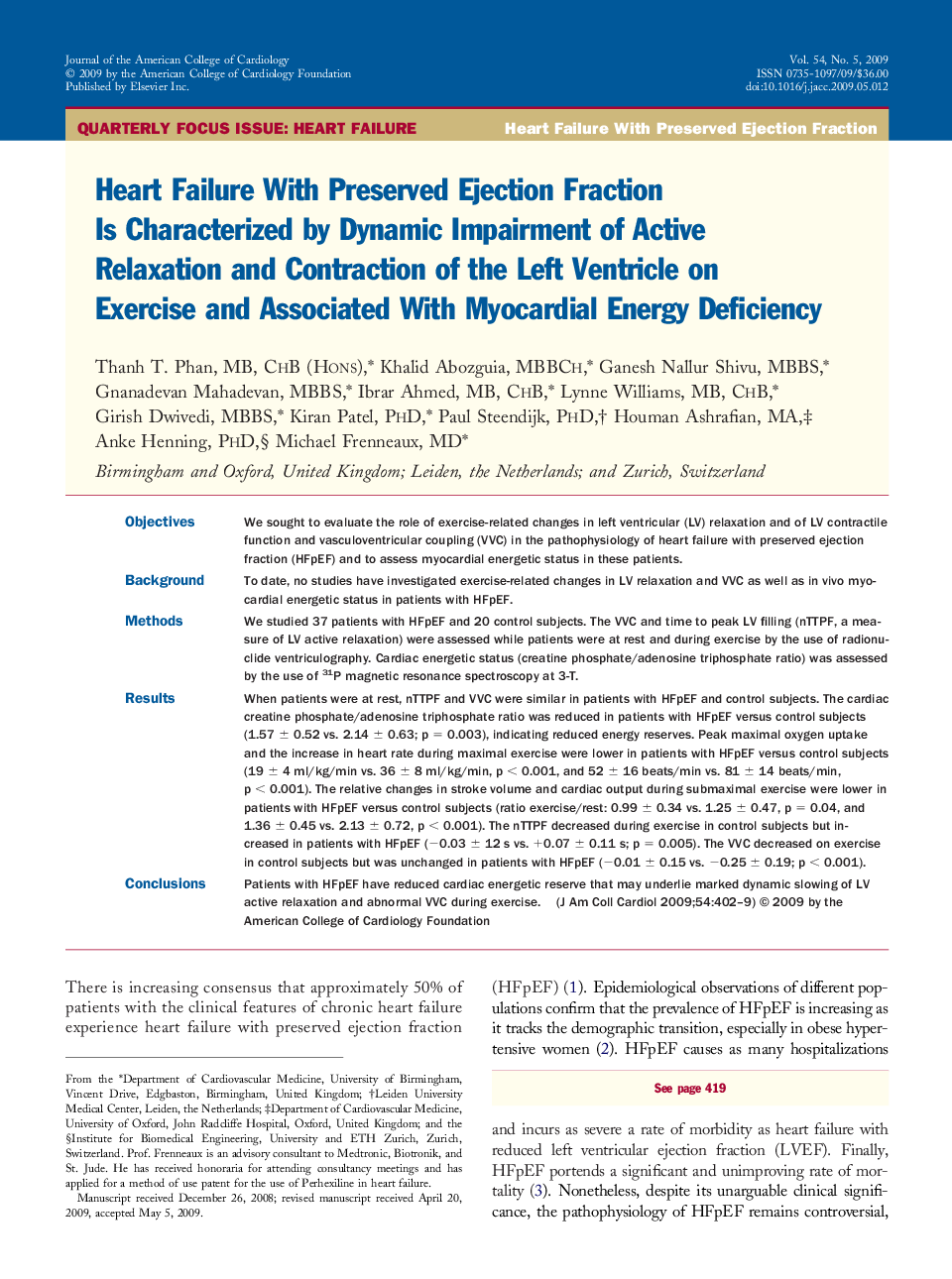| کد مقاله | کد نشریه | سال انتشار | مقاله انگلیسی | نسخه تمام متن |
|---|---|---|---|---|
| 2950995 | 1577358 | 2009 | 8 صفحه PDF | دانلود رایگان |

ObjectivesWe sought to evaluate the role of exercise-related changes in left ventricular (LV) relaxation and of LV contractile function and vasculoventricular coupling (VVC) in the pathophysiology of heart failure with preserved ejection fraction (HFpEF) and to assess myocardial energetic status in these patients.BackgroundTo date, no studies have investigated exercise-related changes in LV relaxation and VVC as well as in vivo myocardial energetic status in patients with HFpEF.MethodsWe studied 37 patients with HFpEF and 20 control subjects. The VVC and time to peak LV filling (nTTPF, a measure of LV active relaxation) were assessed while patients were at rest and during exercise by the use of radionuclide ventriculography. Cardiac energetic status (creatine phosphate/adenosine triphosphate ratio) was assessed by the use of 31P magnetic resonance spectroscopy at 3-T.ResultsWhen patients were at rest, nTTPF and VVC were similar in patients with HFpEF and control subjects. The cardiac creatine phosphate/adenosine triphosphate ratio was reduced in patients with HFpEF versus control subjects (1.57 ± 0.52 vs. 2.14 ± 0.63; p = 0.003), indicating reduced energy reserves. Peak maximal oxygen uptake and the increase in heart rate during maximal exercise were lower in patients with HFpEF versus control subjects (19 ± 4 ml/kg/min vs. 36 ± 8 ml/kg/min, p < 0.001, and 52 ± 16 beats/min vs. 81 ± 14 beats/min, p < 0.001). The relative changes in stroke volume and cardiac output during submaximal exercise were lower in patients with HFpEF versus control subjects (ratio exercise/rest: 0.99 ± 0.34 vs. 1.25 ± 0.47, p = 0.04, and 1.36 ± 0.45 vs. 2.13 ± 0.72, p < 0.001). The nTTPF decreased during exercise in control subjects but increased in patients with HFpEF (−0.03 ± 12 s vs. +0.07 ± 0.11 s; p = 0.005). The VVC decreased on exercise in control subjects but was unchanged in patients with HFpEF (−0.01 ± 0.15 vs. −0.25 ± 0.19; p < 0.001).ConclusionsPatients with HFpEF have reduced cardiac energetic reserve that may underlie marked dynamic slowing of LV active relaxation and abnormal VVC during exercise.
Journal: Journal of the American College of Cardiology - Volume 54, Issue 5, 28 July 2009, Pages 402–409